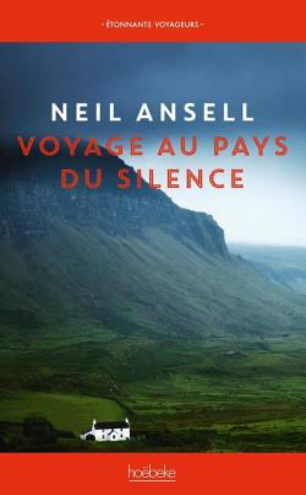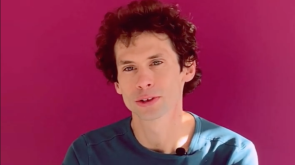
Loss of auditory contact with nature
What do we hear from nature? What does this experience bring us? What happens as we age and develop hearing loss? Can hearing aids restore our connection with nature?Three complementary studies recently published by a group of hearing scientists, including Christian Lorenzi, a researcher at the Laboratoire des Systèmes Perceptifs at the ENS-PSL, explore our ability to hear natural soundscapes - acoustic scenes associated with wild or rural places - and highlight a perceptual consequence of cochlear hearing loss never explored before: a disconnection with "nature".
Christian Lorenzi went to Scotland to meet British writer Neil Ansell, author of an autobiographical account documenting "what it feels like" to gradually lose auditory contact with nature. A meeting between a researcher and a writer to explore a unique testimony.
Natural soundscapes and hearing loss
Natural soundscapes are defined here as complex arrangements of sounds produced by biological sources such as birds and insects, and geophysical sources such as wind, rain and a river, shaped by habitat-specific sound propagation effects such as diffraction (scattering of soundwaves as they pass through or around an obstacle) or reverberation(Grinfeder, E. et al., 2022). The collective sound produced by animal vocalizations in a given habitat is often referred to as biophony, and the one produced by geophysical sounds as geophony (Krause, B., 1987).
The study conducted by Nicole Miller-Viacava, Dane Lazard, Tanguy Delmas, Frédéric Apoux, Christian Lorenzi (Miller-Viacara et al.) in collaboration with Bernie Krause, who pioneered the use of soundscapes to study and monitor ecological processes some fifty years ago, reveals that the ability to discriminate natural soundscapes varying in habitat (forest, meadow, grassland, etc.), time of day and season, is severely reduced in people with sensorineural hearing loss. The main results of this study are shown in Figure 1. The deficit observed in this study is not clearly related to age or to the severity of hearing loss as estimated by pure-tone audiometry, the screening tool used in ENT clinics to diagnose sensorineural hearing loss. These results suggest that hearing-impaired people cannot build an accurate auditory representations of place and time using their ears and auditory brain. A complementary experiment conducted with normal-hearing participants listening to filtered versions of these soundscapes indicates that reduced audibility of the softest sounds (a reduction typically associated with sensorineural hearing loss) contributes strongly to the deficit observed in hearing-impaired participants, suggesting that appropriate amplification via hearing aids should be beneficial in these listening conditions.

Innovative studies
These studies are innovative for two reasons. First and from a fundamental point of view, they build on recent advances in ecology indicating that soundscapes reflect important ecological processes at work in natural habitats (Krause, 1987 ; Sueur & Farina, 2015). By focusing on our potentially ancestral ability to hear ecological processes at work in natural environments (Lorenzi et al., 2023), these studies broaden the scope of "human auditory ecology" initiated by Gatehouse et al. (1999), but which was limited to urban environments. Secondly, these studies highlight a perceptual consequence of cochlear hearing loss that - to our knowledge - has never been explored before, namely an auditory disconnection with "nature". Many benefits of exposure to natural sounds, such as reduced physiological stress, attentional benefits and positive emotions (Buxton et al., 2021; Ratcliffe, 2021) have been reported to date. These effects, often described as "restorative", are associated with increased well-being. One study suggests that hearing-impaired people experience fewer restorative effects than normal-hearing people when visiting urban parks (Payne, 2008). So, for hearing-impaired people living in rural areas, or for those who regularly visit green spaces and national parks, quality of life could depend not only on efficient communication, but also on accurate perception of their surroundings, including natural soundscapes.
The Last Wilderness: A Journey into Silence
A meeting between a hearing researcher and the author of an autobiographical account documenting "what it feels like" to gradually lose auditory contact with nature.


The lack of research and interest in the effects of hearing loss on contact with nature is surprising at first sight. This may reflect the limited importance of experiencing natural soundscapes for people with hearing loss, compared with their day-to-day communication difficulties. However, this limited interest contrasts sharply with many personal accounts, including that of a British writer, Neil Ansell, who recently published an autobiographical account - "The Last Wilderness: A Journey into Silence" (2020) - documenting "what it feels like" to lose auditory contact with nature. This story fits in perfectly with the research program in human auditory ecology described by Christian Lorenzi et al. (2023) and Miller-Viacava et al. (2023), as it offers a solid rationale and a set of detailed observations focusing on the auditory perception of biophony and geophony for people with hearing loss.

Season after season, Neil Ansell describes his auditory experiences as he visits relatively wild areas of the Scottish Highlands and interprets them in light of his own auditory memories. This testimony is fundamental in that Neil Ansell accurately records the many consequences of hearing loss caused by ear infections contracted as early as the age of three and, more recently, by age-related hearing loss. In his own words, the author characterizes his personal auditory universe as "being dismantled, piece by piece", leading to a "feeling of nostalgia".

Neil Ansell and Christian Lorenzi decided to meet in the Scottish Highlands, where the writer has been living for the past two years, to discuss this new form of auditory ecology.
From the very first discussion, the British writer forcefully asserts the importance of taking into account this essential dimension of our quality of life: auditory contact with nature is vital, and quality of life should not be limited to the quality of communication. From his own experience, listening effort - the voluntary allocation of mental resources to listening - is of a different nature in urban and natural environments. "Natural sounds invite our attention, whereas urban sounds demand attention," he says. This personal observation corroborates earlier work on soundscape ecology and environmental acoustics, suggesting that part of the restorative effects resulting from exposure to natural soundscapes would have an attentional component (Buxton et al., 2021; Ratcliffe, 2021). Consistent with his high-frequency hearing loss, Neil Ansell confirms that his perception of insect sounds is most affected, and has almost disappeared. This is followed by bird and mammal sounds, leading to a "fragmented" perception of biophony. However, some elements of the soundscape seem to have been preserved, such as the sound of streams and rain.

During a walk with the scientist through sites (forest, meadow, riverbank) close to Neil Ansell's home on the banks of a loch near Fort William, the writer demonstrated a sensitivity to reverberation that enabled him to distinguish between open spaces (meadows and clearings) and closed spaces (forests), as well as an ability to appreciate the overall level of biodiversity of the various sites visited. Neil Ansell now wears bilateral hearing aids. In contrast to their very limited benefits in social and urban environments, his hearing aids seem to provide benefits when visiting natural sites close to his home, in agreement with some of the conclusions drawn from the experimental study by Miller-Viacava et al. (2023). For example, his hearing aids help him to detect and identify certain bird sounds, wind in the trees and water sounds. The aids also restore the sounds produced by footsteps, including the sensation of walking on fallen leaves in autumn. Above all, thanks to these hearing aids, Neil Ansell still experiences positive emotions when listening to the vocalizations of birds, the sound of rain and streams.
Neil Ansell concludes the discussion with a vibrant message to hearing aid manufacturers: "We're not just here to talk to each other. That's only part of our lives. For many people, their relationship with the natural world is a very important part of their lives. So hearing aid manufacturers should be looking at the ability of hearing aids to help people maintain their connection with nature."
Listen to the full interview of Neil Ansell by Christian Lorenzi.
For more information
- "Comment écouter la nature quand le vivant nous parle", The Conversation, 21 septembre 2023.
- Un programme de recherche novateur pour éclairer des mécanismes auditifs humains potentiellement ancestraux
- Une mosaïque sensorielle pour comprendre la crise environnementale
- Programme de recherche en écologie auditive humaine de l'ENS-PSL (Paris, France)
- Site de Christian Lorenzi
Bibliography
- Ansell, N. (2018) The Last Wilderness: A Journey into Silence. Tinder Press (Ed). 320 pp.
- Ansell, N. (2020). Voyage au pays du silence. Hoëbeke (Ed). 224 pp.
- Apoux, F., Miller-Viacava, N., Férriere, R., Dai, H., Krause, B., Sueur, J. & Lorenzi, C. (2023). Auditory discrimination of natural soundscapes. Journal of the Acoustical Society of America, 153, 2706-2723. doi: 10.1121/10.0017972.
- Buxton R.T., Pearson A.L., Allou C., Fristrup K., & Wittemyer G. (2021). A synthesis of health benefits of natural sounds and their distribution in national parks. Proceedings of the National Academy of Sciences of the United States of America, 118. doi: 10.1073/pnas.2013097118.
- Gatehouse, S., Elberling, C., & Naylor, G. (1999). Aspects of auditory ecology and psychoacoustic function as determinants of benefits from and candidature for non-linear processing in hearing aids. In A. N. Rasmussen, P. A. Osterhammel, T. Anderson, & T. Poulsen (Eds.), Auditory models and non-linear hearing instruments (18th Danavox Symposium) (pp. 221–233). Copenhagen, Denmark: Holmens Trykkeri.
- Grinfeder, E., Lorenzi, C., Haupert, S., & Sueur, J. (2022). What do we mean by “soundscape”? A functional description. Frontiers in Ecology and Evolution, 10, 894232 doi: 10.3389/fevo.2022.894232.
- Krause, B. (1987). Bioacoustics, habitat ambience in ecological balance. Whole Earth Review, 57, 14–18. ISBN: 0749-5056.
- Krause, B., Gage, S.H. & Joo., W. (2011). Measuring and interpreting the temporal variability in the soundscape at four places in Sequoia National Park. Landscape Ecology, 26, 1247–1256. https://doi.org/10.1007/ s10980-011-9639-6
- Lorenzi, C., Apoux, F., Grinfeder, E., Krause, B., Miller-Viaca, N., & Sueur, J., (2023). Human auditory ecology : Extending hearing research to the perception of natural soundscapes by humans in rapidly-changing environments. Trends in Hearing. 23312165231212032. doi: 10.1177/23312165231212032. PMID: 37981813; PMCID: PMC10658775.
- Miller-Viacava, N., Lazard, D., Delmas, T., Krause, B., Apoux, F., & Lorenzi, C. (2023). Sensorineural hearing loss alters auditory discrimination of natural soundscapes. International Journal of Audiology, 1-10. doi: 10.1080/14992027.2023.2272559.
- Payne, S.R. (2008). Are perceived soundscapes within urban parks restorative? Proceedings of Acoustics 08, 5519-5524.
- Ratcliffe, E. (2021). Sound and soundscape in restorative natural environments: A Narrative literature review. Frontiers in Psychology, 12, 570563. doi: 10.3389/fpsyg.2021.570563.
- Sueur J., & Farina A. (2015). Ecoacoustics: the ecological investigation and interpretation of environmental sound. Biosemiotics, 8, 493–502. doi : 10.1007/s12304-015-9248-x.
- Thoret, E., Varnet, L., Boubenec, Y., Ferriere, R., Le Tourneau, F.-M., Krause, B. & Lorenzi, C. (2020). Characterizing amplitude and frequency modulation cues in natural soundscapes: A pilot study in four habitats of a biosphere reserve. Journal of the Acoustical Society of America, 147, 3260-3274. doi: 10.1121/10.0001174.



